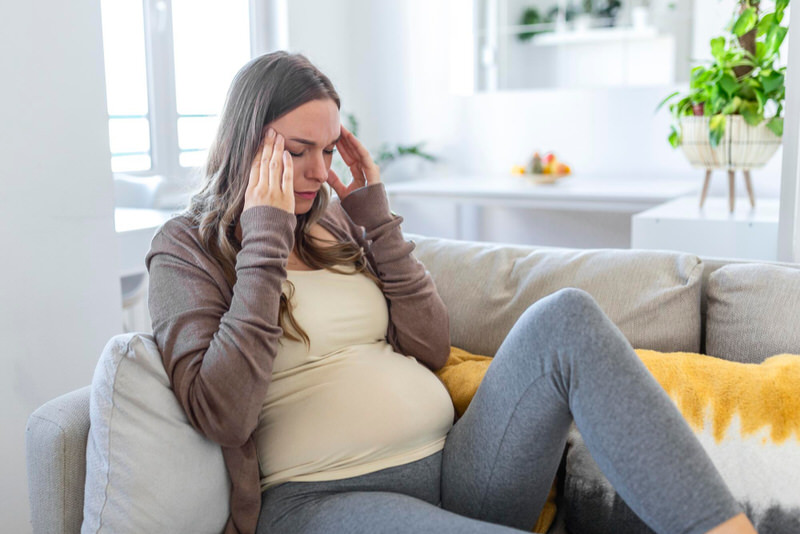It’s natural to have concerns with a repeated c-section as many risks are involved. The risks include getting infected, hemorrhaging, uterine rupture, bladder or bowel injury, blood clots, placenta problems, reaction to anesthesia, and adhesion. It all depends on your overall health and pregnancy circumstances. But there’re ways to minimize the risk involved by choosing better and planned ways to deliver your next child. You can even opt to go for a trial of labor after a cesarean which happens when you previously had a c-section. A more than necessary worrying could be a sign of tokophobia, and for that, you need to consult professionals. Have a talk with your doctor about your birthing options and minimize the risks.
Hoping for an easy birth of your child is a wish every pregnant woman/parent wants to be fulfilled. Whatever your reason might have been for going through a c-section for your firstborn child, it can be scary to go through a repeat c-section for your second one too.
Each repeat c-section is generally more complicated than the last, but there’s no knowledge about how many repeat c-sections are safe.
A c-section might be painless and quick, but it comes with some strings attached too. There’s a reason why doctors want you to opt for vaginal delivery and go for a c-section only when you’ve got a complicated pregnancy.
But to make an informed decision, it’s essential to know what are risks attached with repeat c-section. Is there a way to avoid all these risks? Can you opt for a vaginal delivery after getting a c-section done? Let’s find out more about this!
Risks of repeat c-section

A c-section is a surgical delivery of the baby done by incisions in the mother’s abdominal wall and uterus. It can be scheduled or an emergency c-section if the doctor can see the pregnancy is in danger.
Although painless and quick, a faster recovery rate than a vaginal delivery c-sections does have more risks than vaginal births.
A cesarean scar can lead to complications in future pregnancies with the uterus, placenta, and abdomen. The more frequently incisions are made, the greater the risk of complications.
If your first has been a c-section, you’ll need to have future births with c-sections if the incision on the uterus was vertical rather than horizontal.
However, below mentioned are the risk that you’ll be taking with repeat cesarean deliveries:
Infection
Your uterus lining can become infected (endometritis) after getting a c-section surgery. The incision based on its length may also develop an infection if proper care hasn’t been taken during the first recovery period. You need to be careful of warning signs and seek medical advice to ensure adequate recovery from your first-time c-section.
Being overweight or being diabetic can also increase the chances of infection. Proper medication like antibiotics recommended and antibacterial soap needs to be correctly administered.
Uterine rupture
Chances of uterine rupture increase at a rate of 0.5 % in pregnancies with a prior c-section.
The risk of the rupture goes up with a classical incision scar, labor induction or augmentation, a larger-than-average fetus, older maternal age, and post-term delivery.
Hemorrhage
Many women also experience excessive bleeding as a c-section complication. Various factors leading to a hemorrhage include a vaginal tear, a cut organ, a large episiotomy, and more.
This could quickly become scary, as one woman reported saying she didn’t even know she was hemorrhaging until nurses checked on her and informed her.
All she felt was her body burning up, which she thought was an aftereffect of a c-section, but in fact, her body was ice-cold as she was losing a lot of blood. She then had to proceed with a blood transfusion.
Other risk factors are anemia, placenta previa, multiple gestation, and chorioamnionitis. The risk of heavy bleeding increases with each repeated cesarean delivery.
Bladder or bowel injury
In some c-sections, accidents could also happen.
As with any surgery, there is some risk involved. A woman might experience damage to her bowel or bladder during the procedure. But further surgeries can fix the issue.
Blood clots
After getting a c-section done, there’s a risk of a rise in blood clots, including a deep vein thrombosis (DVT) in the legs or pelvic area.
A dislodged blood clot may travel to your lungs, block blood flow to the heart, and cause a life-threatening pulmonary embolism.
Placenta problems
When you’ve had a previous c-section, there’s a risk of placenta previa in future pregnancies, increasing by 1.5 to six times.
Placenta previa is a condition where the placenta grows over the cervical opening. The more repeated c-sections you get, the more the risk of placenta previa.
Other placenta complications can result from previous c-sections, including placenta accrete, placenta increta, and placenta percreta. All of these are collectively termed as placenta accrete spectrum, and they represent a range of adherence of the placenta into the uterine wall.
This complication has increased since the 1970s. A study in 2016 found the rate in the U.S. to be 1 in 272, accompanied by a lack of prenatal care. The more c-sections you get, the more the risk of placenta accrete spectrum increases.
Reactions to anesthesia
There are also some side effects of anesthesia given before performing a c-section.
It depends as sometimes there’s general anesthesia where the mother remains unconscious, and other times spine block is administered where the mother can see what’s happening although the procedure is painless in both.
You might experience vomiting, headache, dizziness, blurred vision, weakness, and breathing difficulties.
Adhesions
Adhesions are another potential risk c-section patients have to endure. It occurs when scar tissue connects tissues and organs that aren’t usually attached.
It also complicates future c-sections by making it more challenging to open the uterus and increasing operation time. The presence of adhesions is also associated with a greater risk of bladder injury.
The more repeated c-sections you get, the more this particular risk increases.
Ways to lower repeat c-section risk

Risks don’t have a 100 percent surety of happening. Getting a repeat c-section is a decision that can be scary. But there’re ways to minimize this risk.
After your firstborn was delivered through a c-section, there’re ways to make sure the subsequent c-section isn’t that scary. It majorly depends on your overall health and pregnancy circumstances.
Vaginal birth after c-section
As your primary birth decision was of a c-section, be it planned or based on an emergency, it’s not necessary to opt for repeated c-sections for your future deliveries as well. If you’re planning to have more children, you can also opt for a trial of labor after cesarean (TOLAC), which is an attempt to give birth vaginally after a c-section.
Vaginal birth (normal delivery) after cesarean is an essential option for those who got a c-section previously. They’re associated with decreased maternal morbidity and reduced complications in future pregnancies.
Uterine rupture is the primary risk factor associated with VBAC, and for someone with a history of c-section, the risk lies somewhere between 0.9% and 3.7%. The good news is that people between 60% to 80% of those who attempt VBAC can achieve a vaginal birth.
Timing of future pregnancy
Even after a c-section, the doctor tells you to avoid having sex for the next 6 weeks and allow your body to recover. Even after 2 months, you’re supposed to be on birth control to avoid getting pregnant for the next 6 months.
There’s a reason why your doctor would say that because pregnancies occurring less than six months from the last c-section are at greater risk of adverse outcomes. There’s an increased risk of uterine rupture for those who get pregnant in short intervals.
Not just early intervals but a gap greater than 5 to 10 years could also result in adverse outcomes.
There’s a need to be on birth control to avoid this outcome and reduce the risk significantly. You should talk to your doctor about the type of birth control you need to be on.
Timing of repeat c-section
The timing to get your baby delivered with a c-section can also reduce the risk of complications after your repeated c-section significantly. Research has found that when someone has had multiple c-sections, the timing for the next c-section is of utmost importance.
A 2019 study found that maternal and neonatal morbidity occurred less frequently when delivery occurred at 39 weeks. American Academy of Pediatrics (AAP) recommended deferring scheduled c-sections until 39 completed weeks of gestation.
Tokophobia during repeat c-section

Tokophobia is where women have an extreme fear of pregnancy to avoid childbirth altogether. This fear could become so terrifying that it might physically or emotionally disable you too.
Mostly occurring in women with their first pregnancy because of the stories they have heard, this is prevalent in women with their second pregnancy too. It could have resulted from a previous traumatic experience of childbirth.
In this particular case of feeling scared in the repeated c-section, you might have had a previous traumatic c-section that is now taking over your emotions. This is entirely different from the usual fear of delivering a child, as you might have prenatal depression happening alongside tokophobia.
The only way to deal with such overpowering emotions of fear is to get help from your family and friends. There needs to be a strong support system of people who can assist you during this time.
You might even need cognitive behavior therapy, psychotherapy, and medications to help balance your feelings. You can also try hypnobirthing techniques to see if that helps you ease anxiety.
C-section risks for baby
Not even the mother but even the baby could be at risk for those who wish to pursue repeated c-sections for their future deliveries.
Below are some ways baby could be affected too:
- A c-section needs to be performed at a certain time of the pregnancy. If performed early can result in breathing difficulties in your baby. Doctors recommend it no earlier than 39 weeks of pregnancy, so it should occur when the labor process starts as it releases hormones that are likely to help with lung fluid to make it easier for the baby to breathe.
- There’re some surgical risks involved, as with any other surgery.
- Messing up the due date can also result in issues as a c-section will occur before 39 weeks.
- Premature babies born due to some complications in the pregnancy will also face several issues. They’ll have to regain their health and stay hospitalized until their full term is completed.
- C-section babies might have lower Apgar scores (analyzing your infant’s well-being after birth) because of the anesthesia or the reason behind the c-section.
FAQs
What are the chances of dying during a c-section?
The chances of losing life during a c-section depend on many variables, including your overall health, your current pregnancy condition, your country’s healthcare system, and your socio-economic status.
Combining these can make a lot of difference in saving or losing one’s life. A vaginal birthing option is still safer than a repeated c-section which involves many risks for the parent and the baby.
How can I overcome my fear of having a c-section?
While c-section is a quick surgical process that’s painless and has a higher recovery rate, a lot of parents get scared just before going into the surgery. You need to calm yourself down a couple of months before your due date when the surgery is supposed to happen.
You should include deep breathing exercises, meditation, or yoga in your daily routine to help you remain stable. There’re several childbirth classes you can join to learn how to stay calm when your baby is coming into this world.
If you’re experiencing more than necessary worry where you don’t want to go through the process at all, then you might have tokophobia, which is a fear of childbirth, be it vaginal or c-section. It’s frequent in first-time parents when they hear scary childbirth stories from others but is also common amongst second-time parents.
For this, you’ll have to seek professional help and have a strong support system from family and friends.
Does a second c-section take longer to heal?
For the repeated c-section, the doctor will try to do an incision on the scar from the first c-section if it’s safe to do so. But sometimes, it’s not possible, so they do an incision a little above or below the first scar to get the baby out.
A repeated c-section is a bit difficult on the body compared to the first one and comes with a list of its own complications. There’s a need to be more careful of your second c-section scar, and more considerations need to be taken to ensure proper healing. It does take a bit longer than the first time for the body to heal.
Can you give birth naturally after 2 c-section?
According to the American Congress of Obstetricians and Gynecologists (ACOG), vaginal birth after cesarean, also known as VBAC, can be a safe and appropriate option. While many people choose to go after getting one previous c-section but it’s also good to go after two previous c-sections.
It would be best if you talked with your doctor to get a clear idea about the pros and cons of your situation and which birthing option is suitable for you. It’s best to avoid a repeat c-section as it comes with many risks involved, which could be harmful to you and the baby.
To summarize
Getting a c-section can save you from labor pains and deliver your baby easily and quickly, but repeated c-sections come with their own issues. There’s a lot of information to sort through to make an informed decision about your future delivery.
It’s totally acceptable for the parents to be worried as many risks are involved with a repeat c-section. It’s vital to do your own research and talk to your doctor about your options.
Have a clear understanding of the risks involved and if you’re fit to get another c-section. You should also consider VBAC and ask your doctor if it’s something you’re qualified to pursue.
If there’s more than necessary worrying involved with your pregnancy, such as utmost fear of dying during c-section, you might have tokophobia. You need to consult psychotherapists and have a strong support system from people around you.


